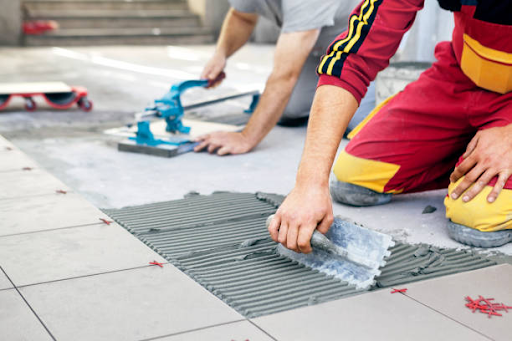How to Choose Waterproof Tile Adhesive for Indian Monsoon
India’s monsoon season brings much-needed relief from the scorching summer, but it also introduces serious challenges in construction and renovation work. One of the most common issues during this season is tile failure caused by moisture infiltration. Whether it’s water seepage from heavy rainfall, humid indoor air, or damp subfloors, tiled surfaces can weaken or fail entirely if the wrong materials are used.
To prevent such problems, selecting the right waterproof tile adhesive is crucial. This article explains how to choose the best waterproof tile adhesive in India—particularly during the rainy season—and provides a step-by-step guide to proper application for long-lasting results.
Why the Right Tile Adhesive Matters During Monsoon
During monsoon months, moisture is everywhere. The ambient humidity increases significantly, rainwater seeps into surfaces, and the risk of water-related tile damage rises. If improper adhesives are used, you may notice:
- Tile debonding due to constant exposure to dampness
- Efflorescence (white powder deposits) and mold behind tiles
- Cracked grout lines, hollow-sounding tiles, or even water leakage
Monsoon is especially tough on areas like balconies, terraces, bathrooms, and outdoor facades, where rainfall or water stagnation is frequent. That’s why using a water-resistant and flexible tile adhesive isn’t optional—it’s a necessity.
Standard cement mortar or basic adhesives may work during dry months, but they quickly fail in monsoon due to low flexibility and poor bonding under wet conditions. You need an adhesive that is designed for India’s weather—especially one that can withstand frequent soaking and drying.
Key Features to Look for in Waterproof Tile Adhesive
When shopping for tile adhesive during the monsoon, don’t just go by brand names. Check if the product includes the following features:
1. Polymer Modification
The most essential feature of any waterproof adhesive is polymer modification. These polymers enhance flexibility, improve bonding on damp or absorbent surfaces, and seal the surface to prevent moisture penetration.
Try Redwop Polymer Tile Adhesive, specially designed for enhanced waterproofing and flexibility—ideal for bathrooms, balconies, and exterior walls during monsoon.
2. Anti-Slip and Quick Setting
High humidity slows down the curing process of adhesives. Look for quick-setting formulations that can hold tiles in place within 20–30 minutes. Anti-slip technology is also important, especially when working on vertical surfaces like kitchen backsplashes or shower walls.
3. Strong Adhesion and Deformability
A good adhesive must bond well to cement screeds, RCC slabs, plastered surfaces, or waterproofed substrates. It should also accommodate slight surface movement due to expansion/contraction during wet-dry cycles.
4. Indoor and Outdoor Compatibility
Ensure the product is rated for both internal and external applications. Bathrooms and kitchens face daily exposure to water, while terraces and outdoor walls endure rainfall, puddling, and thermal variation.
Where Waterproof Tile Adhesive Should Be Used During Monsoon
Many people only consider waterproofing for bathrooms, but monsoon affects all kinds of tiled surfaces. Here are the most critical zones that require attention:
Bathroom Tile Adhesive
Bathrooms are continuously exposed to water splashes, steam, and leakage from plumbing. Waterproof adhesive protects your tiles from swelling or coming off the wall.
Use polymer-modified bathroom adhesives like those available at Redwop Tile Adhesive, designed to resist moisture and ensure tile longevity.
Outdoor Tile Adhesive
Tiles laid on open terraces or external cladding face seasonal wear due to rain, UV rays, and temperature shifts. A good outdoor tile adhesive ensures tiles stay bonded, even after constant exposure to harsh weather.
Floor Tile Adhesive
Monsoon often causes water pooling on floors, especially in entryways, basements, and balconies. A high-quality floor tile adhesive reduces water absorption through grout lines and helps prevent seepage or damp patches.
Step-by-Step Guide: How to Apply Waterproof Tile Adhesive
Choosing the right adhesive is only half the job. Here’s a clear and practical application process to ensure your tiles remain intact—even in the toughest monsoon conditions.
Step 1: Surface Preparation
- Clean the substrate thoroughly. Remove dust, grease, paint, and loose particles.
- If the surface is damp, wait until it is touch-dry.
- Apply a waterproofing primer if the substrate is porous or exposed to direct rain.
Learn more about waterproofing primers at Redwop Waterproofing Solutions
Step 2: Mixing the Adhesive
- Mix the adhesive powder with clean water using a slow-speed mechanical stirrer.
- Follow the recommended ratio on the packaging.
- Let it rest for 5–10 minutes and mix again before use.
Step 3: Application
- Use a notched trowel to spread a thin layer of adhesive (typically 3–6mm).
- Work in small sections so the adhesive doesn’t skin over.
- Press each tile gently into place using a twisting motion to ensure full contact.
Step 4: Curing and Grouting
- Allow tiles to set undisturbed for at least 24 hours.
- Avoid wetting or disturbing the area during this time.
- Use waterproof grout for sealing joints once the adhesive is cured.
Common Mistakes to Avoid During Monsoon Tiling
Many tile failures in India happen due to simple mistakes, especially during rainy weather. Avoid these pitfalls:
- Skipping surface waterproofing before tiling outdoor or bathroom areas
- Using cement mortar instead of polymer-enhanced adhesives
- Incorrect curing times, especially in high humidity
- Ignoring surface slope, causing water accumulation on tiled areas
Proper planning and material selection are the key to success—especially in challenging conditions like monsoon.
Final Thoughts
Choosing the best waterproof tile adhesive in India is not just about product choice—it’s about understanding how weather affects construction, and adapting your methods accordingly. A tile adhesive that works in dry seasons might completely fail in monsoon.
By using polymer-modified tile adhesive, following best installation practices, and investing in reliable brands like Redwop, you ensure that your tiles last longer, resist water damage, and remain visually appealing for years to come. If you need expert advice or product recommendations tailored to your project, you can easily contact our team.
FAQs About Waterproof Tile Adhesive for Indian Monsoon
-
1. Which tile adhesive is best for Indian monsoon?
For monsoon conditions in India, it's best to use a polymer-modified waterproof tile adhesive like Redwop Polymer Tile Adhesive. It offers high bond strength, water resistance, and is suitable for both indoor and outdoor use.
-
2. Can I use tile adhesive on damp walls or wet surfaces?
Tile adhesive should not be applied on wet or water-logged surfaces. The surface must be dry, clean, and stable. If moisture is present, it's recommended to apply a waterproofing layer first using products like those from Redwop Waterproofing Range.
-
3. Is waterproof tile adhesive suitable for bathroom tiles?
Yes. Waterproof tile adhesive is ideal for bathrooms as it prevents water seepage behind tiles and ensures long-term adhesion. Products like Redwop Tile Adhesive Flex work well in high-moisture zones like shower areas and wet walls.
-
4. How long should I wait before grouting tiles after using waterproof adhesive?
After applying waterproof tile adhesive, wait at least 24 hours before grouting. This ensures the adhesive has cured properly and helps avoid tile movement or water absorption during the grouting process.
-
5. What is the difference between cement mortar and waterproof tile adhesive?
Cement mortar lacks flexibility, water resistance, and bonding strength. In contrast, waterproof tile adhesive is polymer-enhanced, pre-mixed for consistency, and provides stronger adhesion—making it much more suitable for rainy and high-moisture conditions commonly seen in India.



